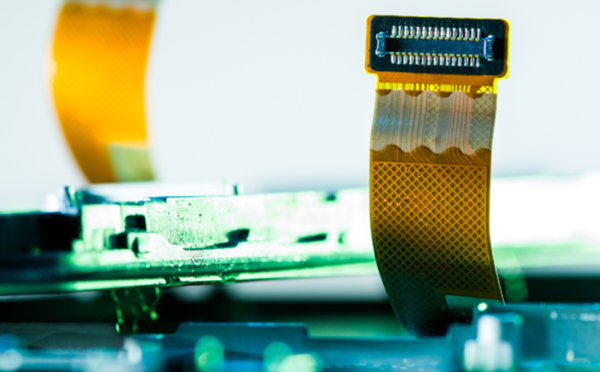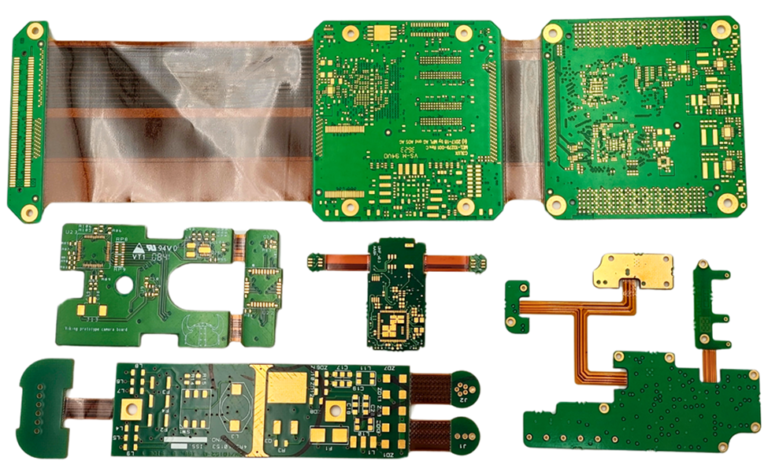Electronic devices consist of a variety of components, and flexible PCBs are the most critical part. Compact size and lightweight design allow flexible PCBs to connect various components. There are many ways to assemble components and choosing the right one can be a bit difficult. This article will give you an in-depth look at some effective techniques for efficient assembly and integration of flexible PCB components.

From material selection to testing, following best industry practices will ensure that the final product meets performance standards. Before going any further, it's best to have a brief understanding of flexible PCB boards.
What does Flexible PCB mean?
A flexible PCB is a special type of circuit board that can be easily bent, rolled up and folded. Unlike rigid PCBs, it is highly flexible. The included flexible substrate and conductive circuitry ensure the know-how associated with processing.
Thanks to excellent adaptability and flexibility, flexible PCBs can be easily designed into any shape and size. You can easily integrate them into compact electronic devices and connect various components.
After delving into flexible PCBs, it's time to delve into some of the benefits of flexible PCBs, which include:
- Light weight
- Thin dimensions
- Easy wiring in all directions
- Excellent electrical performance
Even though flexible PCBs have many advantages, there are certain disadvantages, such as:
- Relatively high price
- Complexity leads to many design difficulties
- Flexible PCBs are not suitable for higher scenarios
It's time to dive into some amazing tips related to assembling and integrating flexible PCBs.
What are the different types of Flexible PCBs available?
If you start browsing the market, there will be tons of options to choose from Based on the size, structural configuration, and functionality; you can easily choose the one that matches your choice.
In the case of Flexible PCBs, your choices are limited. There are many differences between each type based on the overall manufacturing process. Some of the main types of flexible PCBs available on the market include:
- Single-sided flexible PCBs
- Double-sided flexible PCBs
- Engraved Flexible PCBs
- Multilayer Flexible PCBs
It is wise to understand the different types of flexible circuits available in the market. They are:
- Flex Circuits - Flex circuits are manufactured using only flexible thin materials. Applications are simpler and similar to single layer circuits.
- Rigid-flex - Rigid-flex is built using both rigid and flexible materials. As a 3D interconnect, it can be easily bent and folded into any shape.
- High Density Interconnect PCBs - High Density Interconnect PCBs are characterized by more layers, closer spacing, denser wiring, and faster connections.
Do you need to start the process of performing PCB assembly? If so, then it's time to check out a few tips below ......

What are some effective tips for performing flexible PCB assembly and integration?
There are some exclusive tips that you need to follow in order to carry out the flexible PCB assembly process smoothly. Here are the tips that you must consider from the beginning to the final stage:
ⅰ. Identify the right components - First of all, to perform Flexible PCB Assembly, you must identify the right type of components to be installed. At the same time, you must look for details such as part numbers, quantities and reference marks.
ⅱ. Remove moisture properly - It is important to avoid installing components that contain moisture. Since flex circuits contain components that are sensitive to humidity, a certain degree of drying is required.
With the help of a proper baking process, the boards can be kept free from moisture. The temperature to be set depends on the level of humidity available on the board.
ⅲ. Use of high quality solder paste - The Flexible Printed Circuit Board assembly process is difficult without the use of solder paste. In terms of operation, the components need to be mounted on the printed circuit board.
The application of solder paste can be done manually or automatically. Since the solder paste helps connect the electrical components on the board, they must be branded.
ⅳ. Component placement - Care must be taken when mounting components in the PCB. Whether done manually or automatically, you must ensure that each component is in the correct position.
Surface Mount Technology (SMT) and Through Hole Technology (THT) are some of the common methods used in the flexible PCB assembly process. SMT is used in the case of two small components, while the THT method is useful when the components are larger.
ⅴ. Heat the board properly - Soldering the components in the PCB is the next step in soldering each joint. This involves heating the board. It is important to make sure that the temperature is maintained at a moderate level when performing this process.
Molten solder paste helps to create a connection between the components and the PCB. Too much heat may cause unnecessary damage to the board.
ⅵ. Perform the testing phase - The PCB assembly process involves detailed inspection and testing of every detail. The testing continues until the board meets the performance criteria.
The testing process helps in detecting the defects found on the circuit board. The inspection process can be carried out with the help of automated systems or manual visual inspection.
ⅶ. Don't forget to box the final circuit - The final step in the flexible PCB assembly process is sturdy packaging. Once every detail meets the industry standards, the circuit boards are ready to be shipped.
Strong and durable materials are recommended for the packaging process. In addition, proper labeling and boxing will prevent misuse of the manufactured PCBs, and proper packaging will ensure that the boards arrive easily and safely at their desired destination.
Taking these important tips into consideration will enable efficient flexible PCB assembly and integration. Although this is a comprehensive process, if executed carefully, the overall result can meet industry standards.
Following a few best practices can simplify assembly and thus reduce costs. That's all there is to this article, if you are interested in PCB related content you can have a look at our previous articles:
Perceptive Launched SMT Assembly Service
How Can We Design A Better PCB
Similarly, if you have a need for PCB assembly, please contact us.



























